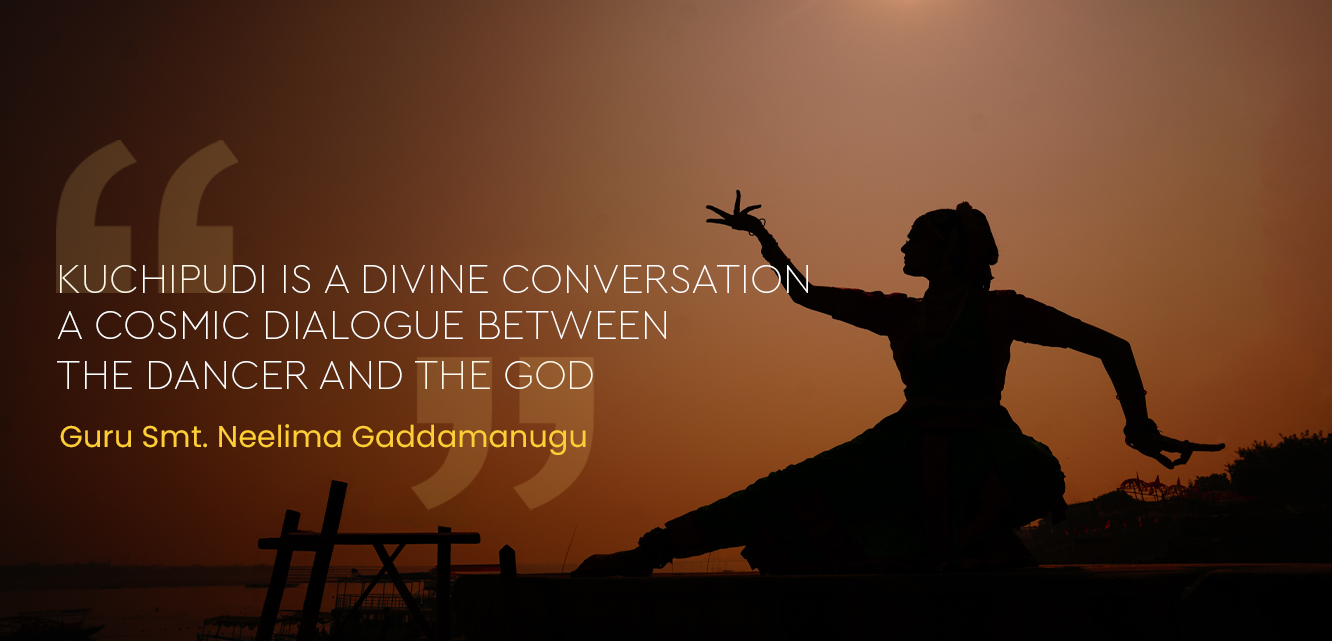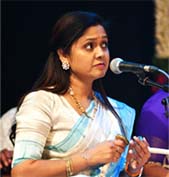The name KUCHIPUDI denotes both the dance style and the tiny, remote village where it was born. Kuchipudi (shortened form of the full name Kuchelapuram or Kuchilapuri) is in the Krishna district of Andhra Pradesh, it is 32 miles from Vijayawada. In fact it is the dance form which has the same name as it’s birthplace the kuchipudi village. The Sangeet Natak Akademi currently confers classical status on eight Indian classical dance styles: Bharatanatyam (Tamil Nadu), Kathak (North and Central India), Kathakali (Kerala), Kuchipudi (Andhra Pradesh), Odissi (Odisha), Manipuri (Manipur), Mohiniyattam (Kerala), and Sattriya (Assam). The Natya Shastra is the foundational treatise for classical dances of India, and Similar to all leading Indian classical dance forms, Kuchipudi too evolved as a religious art rooting back to the age-old Hindu Sanskrit text Natya Shastra. This text is attributed to the ancient scholar Bharata Muni (circa 500BCE - 500CE).
Earlier in the 20th century, Kuchipudi trio – Vempati Venkatanarayana (1871- 1935), Chinta Venkataramayya (1860-1949) and Vedantam Lakshminarayana Sastry(1886-1956) -- had evolved the Kuchipudi dance form with their expertise. Vempati Venkatanarayana was known for his expertise in the Kalapas (adaptation of a small episode/incident from the Bhagavatam and performed by two or three artists). Chinta Venkataramayya, the creator of Kuchipudi Yakshaganas (an entire story from the Puranas told with an amalgamation of music, dance and theatrics, including a large cast of artists) and Vedantam Lakshminarayana Sastry, popularised the solo dance tradition in Kuchipudi dance. All three had passed away by the middle of the twentieth century and it was left to their children and students a to carry forward their works. One of their students was Padmabhushan Vempati Chinna Satyam Born in 1929, received training under gurus Tadepalli Perayya Sastri, Pasumarthi Kondala Rayudu, Vempati Pedda Satyam, and Vedantam Lakshmi Narayana Sastry of which, he was influenced by the later because of his approach and scholastic abilities. He was very keen on bringing Kuchipudi on par with other recognized classical dance forms at the time and was instrumental in bringing changes that would help realize this goal. He classified various jathis and dance patterns and correlated them with Natya Sastra, emphasizing the principled nature of Kuchipudi dance form. He trained many classical dancers and celebrated dancers who in turn helped spreading the art from throughout the world. Many of these artistes initiated dance academies all over India and abroad.
Kuchipudi meticulously follows the rules laid down in the Natya Sastra and is evenly balanced between the three aspects of dance: Nritta, Nritya and Natya without one element overshadowing another. The four aspects of abhinaya, i.e., angika, vachika, aharya and satvika are also to be found in ample measure in Kuchipudi style. Rasaprakarana or the delineation of the appropriate sentiment is done with these four elements of abhinaya. While angika and aharya are performed in a manner not very different from the other classical styles, the use of vachika abhinaya is a special feature of the Kuchipudi style. The dancer not merely dances, but also acts with gestures as well as words. Shabdams, Darus, Jathiswarams, Keerthanams, Thillanas and Tarangams are some widely danced items of Kuchipudi.



